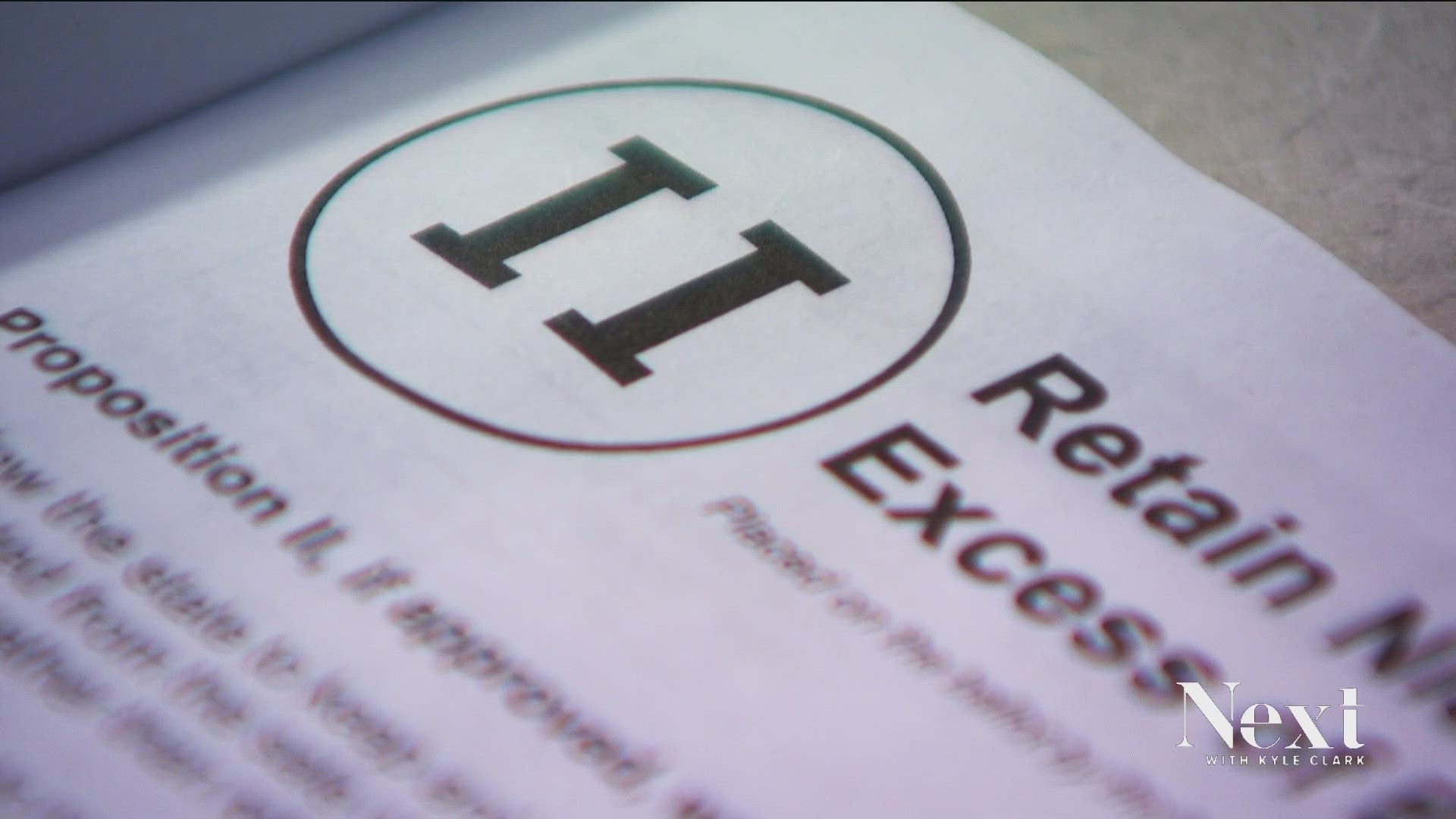COLORADO, USA — It is not unusual to have to tell a preschooler something twice.
Voters are faced with a question about preschool that seems repetitive.
Proposition II (that is ‘eye-eye’) on your November ballot deals with money for universal preschool.
“It’s the same taxes that voters approved in 2020 when they passed Proposition EE,” said Greg Sobetski, Legislative Council Staff Chief Economist.
In 2020, voters passed Proposition EE – which funded universal preschool by increasing taxes on cigarettes and other tobacco products and created a new tax on nicotine products, like vape pens.
“We, Legislative Council Staff, in preparing the [2020] Blue Book, gave voters an estimate of how much revenue would be generated by those increased and new taxes in that first year. We exceeded that estimate,” Sobetski said.
Sobetski does complicated math for lawmakers.
And complicated math is why Proposition II is on your ballot.
“Proposition II, if approved, would allow the state to keep and spend $23.65 million dollars in tax revenue that has already been collected,” Sobetski read from the 2023 Blue Book.
The state constitution requires that the Blue Book shows voters an estimate for the first year’s tax revenue from tax increases.
Should the state collect more than the estimate, it must ask voters for permission to keep the amount that went beyond the estimate.
“We built an estimate that we thought was fairly conservative. It ended up being too low. And that’s the reason for the excess,” Sobetski said.
The 2020 Blue Book said that state would generate $186.5 million in tax revenue, but the state really made $208 million, which is $21.5 million more than the estimate. With interest, that means the state must ask permission to keep and spend $23.65 million or refund it back to cigarette, tobacco and nicotine wholesalers. And if voters say no, the higher tax rates approved by voters in 2020 will need to be reduced by 11.5%.
“Because the idea is, ‘well, if we were off by 11.5% in year one, we’d also be off by 11.5% in year two and year three,’ etcetera,” Sobetski said.
A YES vote allows the state to keep money that voters in 2020 previously said yes too. The $23.65 million was more than the state expected and that is the amount that the state needs your permission to keep.
A NO vote means that the state cannot keep more than what was estimated in the 2020 Blue Book and would have to refund the money back to cigarette, tobacco and nicotine wholesalers and distributors, and also reduce the cigarette, tobacco and nicotine tax rates by 11.5%.
If the Blue Book is always an estimate, why not provide voters with a really high estimate just in case, so the state will not have to ask voters twice for the same pot of money?
“One of the things that our office is responsible for doing is basing an estimate that we believe is the most credible representation of what we expect to happen when estimating anything,” Sobetski said. “We perceive that to be a decision for policy makers to make.”
While Sobetski and Legislative Council Staff prepare the content of the Blue Book, a committee of lawmakers approve the Blue Book. That committee could make amendments to the language. Though, purposefully overestimating a dollar amount could give a voter a reason to reject the ballot issue.
More from Marshall Zelinger:
SUGGESTED VIDEOS: Next with Kyle Clark

